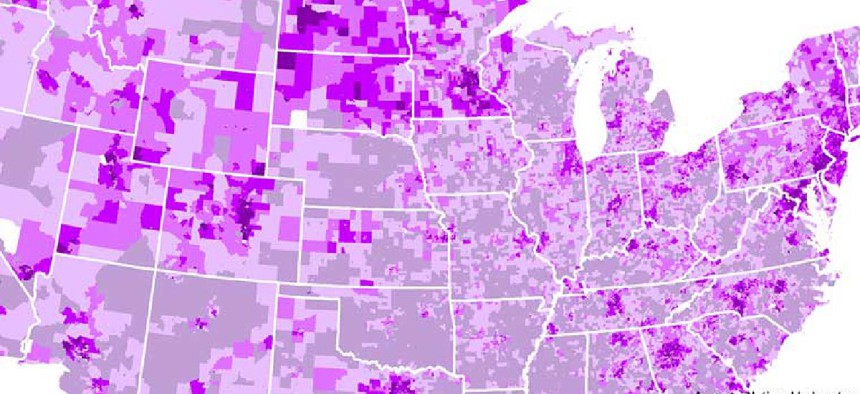Looking at broadband availability data over time

Researchers at Michigan State University have by developed a methodology for integrating Form 477 broadband coverage data with decennial census counts.
To track broadband availability, the Federal Communications Commission requires all internet service providers to submit Form 477 -- on which they report where they offer internet service at speeds exceeding 200 kbps in at least one direction. Fixed providers list the census blocks where they offer service to at least one location, and mobile providers file maps of their coverage areas for each broadband technology.
The accuracy of broadband availability data and mapping has long been debated because it is self-reported by ISPs and because the size and composition of census blocks varies. According to a May 19 Congressional Research Service report, the Form 477 data may be “incomplete or inaccurate.”
In the 10 years between the census counts, people can move in and out of an area, which not only affects the accuracy of the Form 477 data, but it also makes it difficult for researchers or policy-makers who want to study trends or changes in broadband availability. Without a deep understanding of the data, it is nearly impossible to draw meaningful conclusions about broadband penetration and coverage gaps.
Now, researchers at Michigan State University have by developed a methodology for integrating broadband coverage data over time. They produced a dataset that puts data from Form 477 into a continuous timeline and aligns the data to the 2010 census, MSU officials said in a release.
“We developed a procedure for using the data to produce an integrated broadband time series," said John Mann, an assistant professor with MSU’s Center for Economic Analysis. “The team has labeled the dataset BITS, which stands for a Broadband Integrated Time Series.
According to a paper on BITS, the dataset is essential because it provides “the basis for longer comparative analyses of relative provision levels and the identification of locales that lag behind others consistently.” It also makes it easier to compare data from the Form 477s.
“With shrinking public budgets and a need to pinpoint locations suffering from a chronic shortage of broadband, it is critical for policy-makers to efficiently allocate the human, infrastructural, and policy resources required to improve local conditions,” the researchers wrote. “The paper not only provides a framework for integrating and fusing Form 477 broadband data into a robust time-series database, it provides a user-friendly and harmonized version of the broadband data for use, now.”
BITS includes open-source code that analysts can modify for their own research and an approach for cross-walking census data, which is important for future analysis that deals with changes in census geographies. “While the BITS is far from perfect,” the researchers wrote, “it represents an alternative to the current, shorter time series Form 477 data that are available for evaluating broadband provision and the digital divide.”






